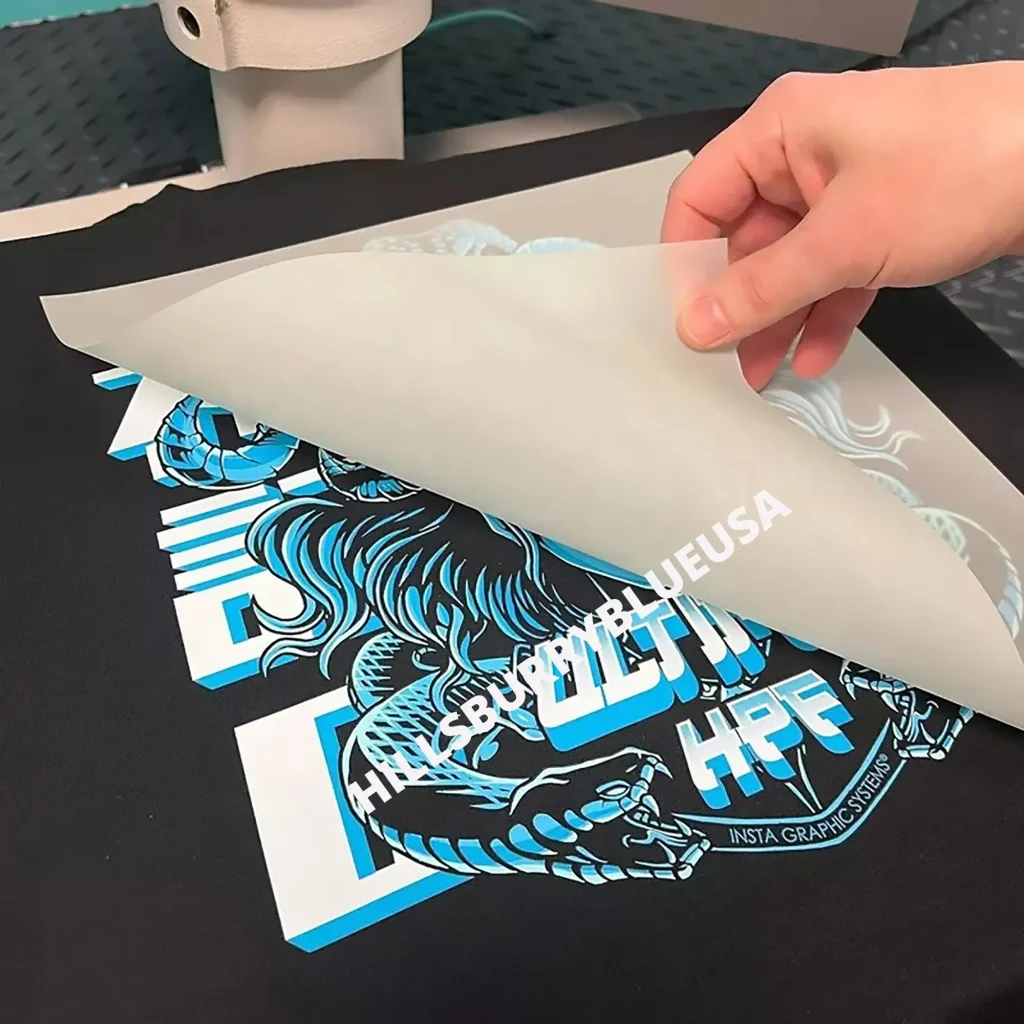DTF transfers, or Direct-To-Film transfers, are revolutionizing the custom apparel printing landscape, offering a fresh way to bring vibrant designs to life. This innovative printing process allows you to efficiently print detailed graphics onto various fabrics, ensuring not only aesthetic appeal but also durability. With the rise of print on demand services, crafters and small business owners are turning to DTF transfers to create unique, high-quality garments that stand out in the marketplace. By mastering fabric transfer techniques, anyone can tap into their creativity and produce eye-catching custom items. In this article, we will explore everything about DTF transfers, including the essential steps and tips to help you excel in your custom printing journey.
In the world of custom textile printing, the term “Direct to Film transfers” describes an exciting method of applying intricate designs to fabric. This technique, which forms part of the broader landscape of fabric transfer technologies, is gaining traction among artists and entrepreneurs alike. With the capability to personalize various fabrics through a simple yet effective printing process, creators are finding new ways to utilize their artistic flair. As the demand for customized apparel grows, the various fabric transfer techniques associated with DTF printing provide an efficient solution for bringing unique apparel concepts to fruition. This guide serves to demystify the DTF printing process and inspire both newcomers and seasoned professionals to explore this innovative printing approach.
Understanding the DTF Printing Process
The DTF printing process is an innovative technique that brings a new dimension to custom apparel creation. Unlike traditional printing methods, DTF transfers allow for the direct application of vibrant designs onto fabrics, thanks to a specialized transfer film. This film is crucial as it holds the ink and adhesive, allowing for a more efficient transfer process that results in minimal waste. By understanding how this process works, crafters and small business owners can reveal their creativity in novel ways, producing detailed designs that stand out.
One of the primary advantages of the DTF printing process is its adaptability to various fabrics. Whether you are working with cotton, polyester, or even blended textile, DTF allows you to cater to diverse customer needs. This versatility makes it an excellent choice for print-on-demand services, where flexibility and creativity are key to success. With DTF, the potential for customized apparel is limitless, opening the door to unique fashion statements.
Benefits of Using DTF Transfers for Custom Apparel
DTF transfers present numerous benefits for those engaged in custom apparel printing. One of the most notable advantages is the high quality of the finished products. DTF transfers are known for their vivid and durable prints which can retain their integrity even after numerous washes. This is particularly appealing for businesses that prioritize customer satisfaction through long-lasting designs. As such, clients are likely to return for repeat orders, bolstering sales.
Moreover, DTF transfers are highly cost-effective, primarily because they eliminate the need for bulky, expensive screen printing setups. This means that even small businesses or individual creators can produce custom designs without breaking the bank. The DTF process also requires fewer materials and offers a quicker turnaround time, making it ideal for on-demand printing. This efficiency not only saves money but allows creators to focus more on the artistic side of their projects.
Essential Equipment for DTF Transfers
Investing in the right equipment is key to your success with DTF transfers. At the heart of the process is the DTF printer, which uses specialized inks that ensure adherence and vibrancy of the prints. It’s crucial to opt for printers known for their reliability within the crafting community, as this will affect the overall quality of your designs. Moreover, a good heat press is essential because it guarantees the appropriate temperature and pressure needed for successful transfers.
In addition to printers and presses, auxiliary tools like graphic design software are invaluable. Programs such as Adobe Illustrator allow for precise design creation and editing. As you delve into the world of DTF transfers, consider exploring templates and online resources to enhance your skills further. The right combination of tools will streamline your workflow and improve the quality of your finished products.
Design Creation Tips for DTF Transfers
Creating your own unique designs is one of the most exciting aspects of working with DTF transfers. Utilizing graphic design software effectively can significantly enhance your crafting experience. For beginners, start by familiarizing yourself with basic design principles to create visually appealing layouts. Experimenting with color contrasts and patterns can lead to eye-catching designs that truly capture attention.
Additionally, don’t hesitate to seek inspiration from successful DTF artists or popular trends within the custom apparel market. Joining online communities or forums can provide feedback on your designs and motivate you to explore different styles. By cultivating your design skills and continuously experimenting, you can develop a distinctive style that will set your work apart in the increasingly competitive realm of custom printing.
Exploring Fabric Transfer Techniques
When working with DTF transfers, it’s important to experiment with various fabric transfer techniques in order to achieve the best results. Each fabric behaves differently when subjected to heat and ink, which can impact the overall success of your transfer. Testing transfers on swatches of diverse materials—like cotton, polyester, and blends—allows you to discover the ideal combinations for vibrancy and durability.
Understanding the nuances of fabric transfer techniques is crucial for perfecting your craft. Some materials may require adjustments in heat press settings, while others might need special pre-treatment to ensure ink adhesion. By diving deep into the technical aspects of fabric transfers, you will enhance your skills and elevate the quality of your finished products, solidifying your place in the custom apparel market.
Starting Your Own DTF Printing Business
Embarking on a journey to start your own DTF printing business can be an incredibly fulfilling endeavor. With the rise in demand for personalized apparel, the timing is ideal for leveraging DTF technology to launch your brand. Begin by establishing a clear vision for your business—define the niche you wish to target, whether it’s trendy streetwear, custom sports apparel, or event-themed designs.
Additionally, it’s important to build an online presence through social media and an e-commerce platform. Quality marketing tactics, including engaging content and visuals of your DTF creations, can attract potential customers to your brand. By combining dedicated creativity with strategic marketing, you can carve out a space in the booming custom apparel industry.
Frequently Asked Questions
What are DTF Transfers and how do they work?
DTF Transfers, or Direct-to-Film transfers, are a modern printing technique where vibrant designs are printed onto a specialized film, then transferred to fabrics using heat and pressure. This process results in high-quality custom apparel printing that is both durable and versatile.
What materials are needed for the DTF printing process?
To successfully execute the DTF printing process, you’ll need a DTF printer, heat-sensitive powder adhesive, transfer film, and a heat press. Additionally, high-quality DTF inks are crucial to achieve vibrant and long-lasting prints on various fabrics.
Can DTF Transfers be used on all fabric types?
Yes, DTF Transfers are suitable for a wide range of fabrics, including cotton, polyester, and blends. They can even be used on darker materials, making them a versatile option for custom apparel printing.
What are the advantages of using DTF Transfers for custom apparel?
The advantages of DTF Transfers include their versatility across different fabric types, high-quality vibrant prints, durability that withstands numerous washes, and cost-effectiveness for small runs and personalized items, making them ideal for custom apparel printing.
How does the curing process affect the quality of DTF Transfers?
The curing process is essential for DTF Transfers as it involves applying heat to solidify the adhesive and ink on the film. Proper curing ensures optimal adhesion and prevents issues such as peeling or fading, resulting in high-quality finished products.
What tips can beginners follow to improve their DTF transfer results?
Beginners should invest in quality DTF equipment, practice using graphic design software for creating images, experiment with different fabric types, and start with small projects to build skills and confidence in the DTF printing process.
| Key Steps | Description |
|---|---|
| 1. Design Creation | Create unique designs using graphic design software like Adobe Illustrator or CorelDRAW. |
| 2. Printing | Print designs on transfer film using a DTF printer with DTF inks. |
| 3. Powder Adhesive Application | Apply heat-sensitive powder adhesive to the wet ink on the film. |
| 4. Curing | Cure the transfer in heat to solidify the ink and powder adhesive. |
| 5. Transfer | Position the transfer on the garment and apply heat and pressure using a heat press. |
Summary
DTF Transfers are a remarkable method for unleashing creativity in the world of custom apparel. This advanced technique allows for vibrant designs to be printed directly onto a variety of fabrics, providing an ideal solution for artists and small business owners. Through the essential steps outlined in this guide, from design creation to the final transfer, anyone can start producing high-quality textile prints. The versatility and durability inherent in DTF Transfers make them a popular choice among crafters, ensuring that products not only look great but last through multiple washes. As you embark on your DTF journey, explore online resources and engage with the crafting community to enhance your skills and find inspiration. Happy crafting!



